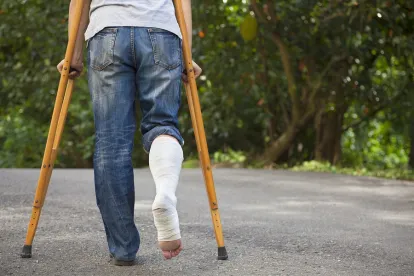The Occupational Safety and Health Administration finds that its new severe injury reporting program is a success. It believes a large number of severe injuries still are not being reported by employers. The agency has warned that tough consequences face employers who choose to ignore the reporting requirements.
Effective January 1, 2015, employers had to begin reporting any work-related amputation, in-patient hospitalization, or loss of eye to OSHA within 24 hours. The requirement to report a fatality within eight hours remained unchanged. The agency said the intent of the new reporting is to enable OSHA to improve targeting its compliance assistance and enforcement efforts to places where workers are at greatest risk, and to engage more high-hazard employers in identifying and eliminating serious hazards.
In a March 17 report summarizing the first-year results, OSHA said employers reported 10,388 incidents involving severe work-related injuries, including 7,636 hospitalizations and 2,644 amputations. The reports were based on data from federal OSHA states only and do not include injuries from the 26 states that administer their own safety and health programs.
Manufacturing led all industry sectors with 26% (1,985) of hospitalizations and 57% (1,507) of amputations. Foundation, structure, and building exterior contractors (NAICS code 2381) reported the most severe injuries: 391. Rounding out the top five were:
-
Building equipment contractors (NAICS code 2382) with 343;
-
Support activities for mining (NAICS code 2131) with 323;
-
Nonresidential building construction (NAICS code 2362) with 271; and
-
U.S. Postal Service (NAICS code 4911) with 229.
“Most of the hazards that led to these severe injuries are well-understood and easily prevented,” OSHA remarked. “They also account for a majority of work-related fatal injuries. And we know that, in most cases, employers can abate them in straightforward, cost-effective ways, such as by providing fall protection equipment, installing guarding over dangerous machinery, or clearly marking pathways.”
The agency said it responded to 62% of the 2015 reports, including 69% of hospitalization reports, by asking employers to conduct their own incident investigations and propose remedies to prevent future injuries. OSHA offered assistance by providing employers with guidance materials and the expertise of a government safety officer. The agency has dubbed the collaborative problem-solving approach Rapid Response Investigation (RRI). In a typical RRI, the employer analyzes the incident to identify the causes, and presents OSHA with its findings and proposed abatements, which can include changes to processes and equipment and training. In roughly a third of all injury reports and 58% of amputation reports, OSHA said it responded with an inspection by a compliance officer after determining the hazardous conditions described warranted direct intervention.
Despite OSHA’s conclusion that the program has proven its worth, the agency has surmised from sources, such as injury claims from state workers’ compensation programs, that as many as more than 50% of severe injuries are going unreported. Because the majority of first-year reports came from large employers, OSHA has concluded that many small and mid-sized employers are unaware of the new requirements. Outreach strategies, including working through insurers, first responders, and business organizations, are being developed to get the message to them.
However, OSHA believes that some employers are choosing to ignore the law. OSHA said the fine for non-reporting could go as high as $7,000, an amount set to go up when higher penalty levels take effect later this year. The penalty for willfully failing to report a severe injury promptly could run as high as $70,000.
OSHA indicated that since its evaluation of the program is ongoing, changes to improve the effectiveness can be expected. Already, the agency has seen fit to refine guidance to the field about when to launch an RRI versus an inspection. See our article, OSHA Sets 400% Fine Increase for Reporting Rule Violations. The agency indicated that it is also seeking new ways to make sure small employers know about their reporting obligations and the resources available to them.




 />i
/>i

